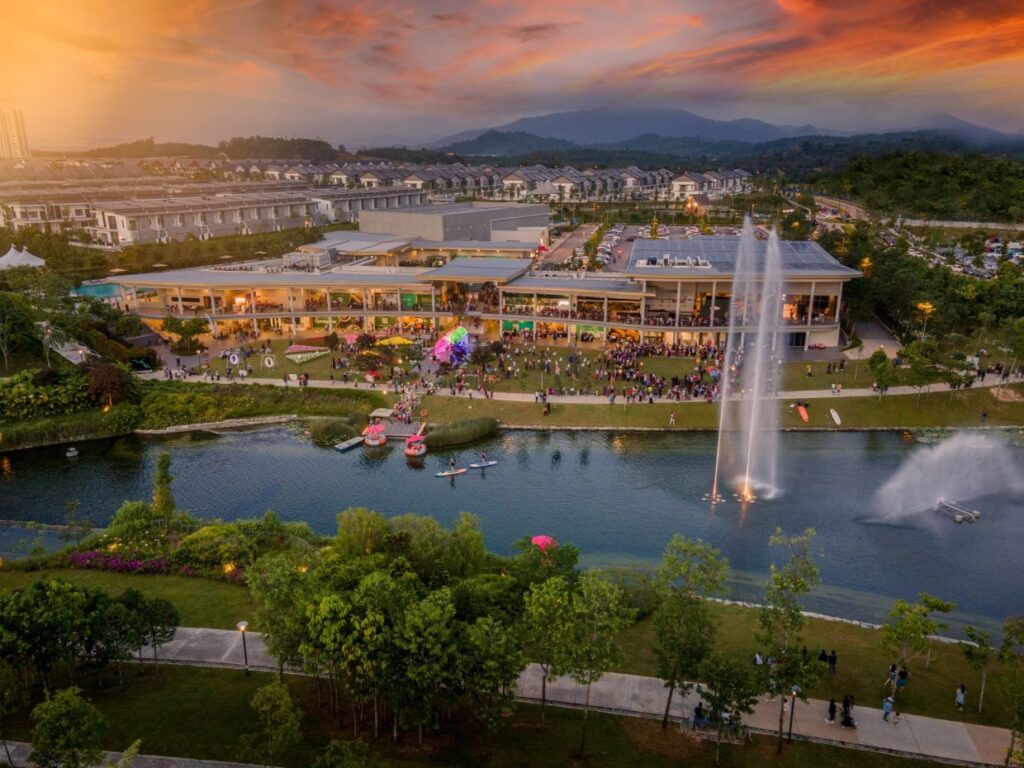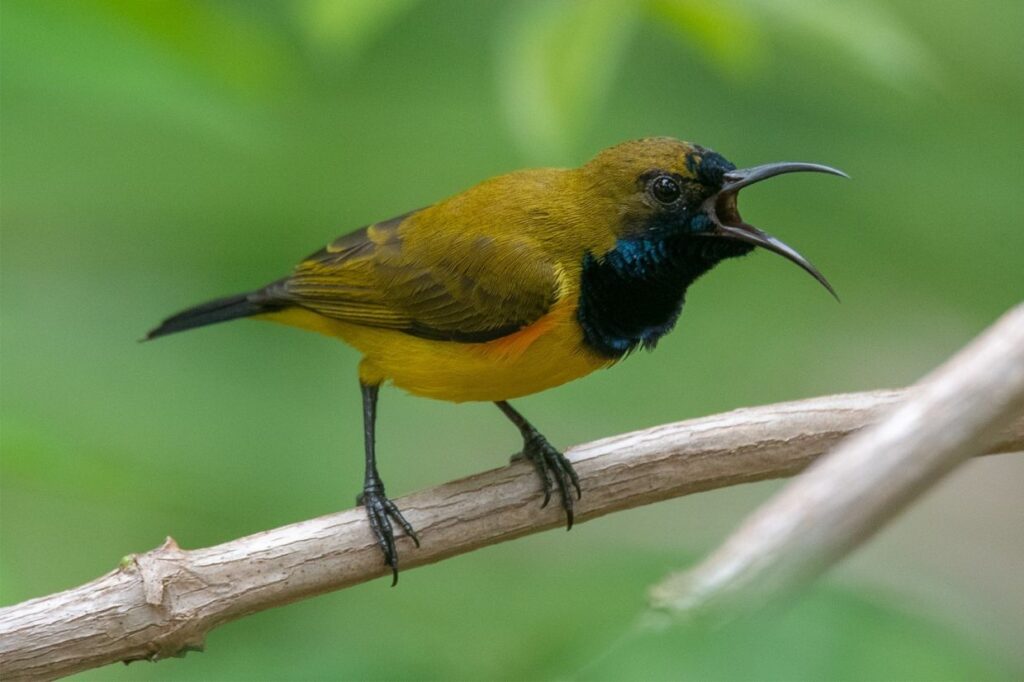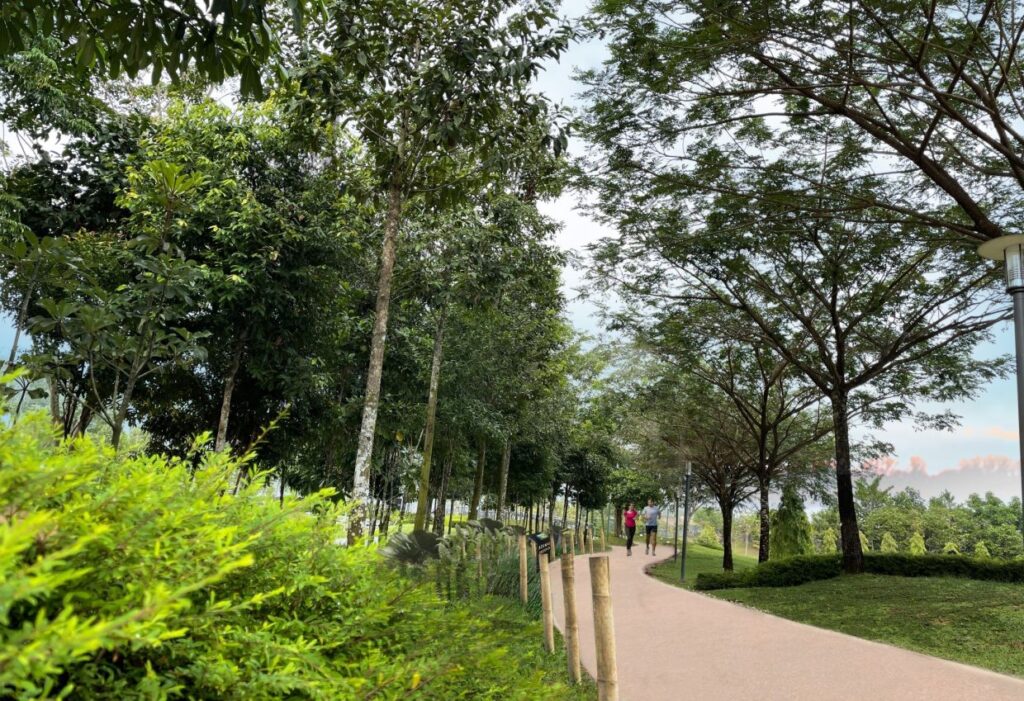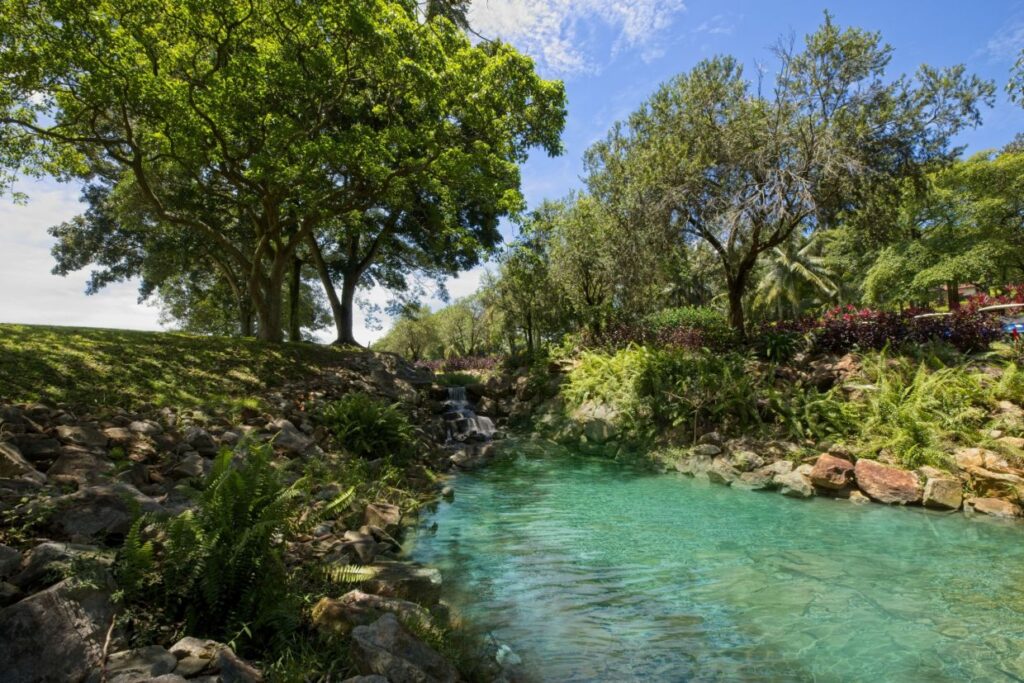Township in tune with nature

Mindfully fusing lifestyle with nature, the 810-acre Gamuda Gardens in Northern Klang Valley, is a true success story of holistic rehabilitation and regeneration. Formerly an abandoned monoculture rubber plantation that lacked flora and fauna, it has today been transformed into a sought-after township with a thriving and biodiverse ecosystem.
This has been recognised with a win in the Environment category at the prestigious FIABCI Malaysia Property Awards 2021.
Respectful of nature
“In seeking to rehabilitate this once abandoned rubber plantation, we remained true to Gamuda Land’s town-making principles, which is to ‘listening to what the land has to tell us’.
“This means we try to preserve and restore natural features — be it hilly terrain, rivers or lush wetlands — and carefully blend them into our neighbourhood design.
“By seamlessly integrating the natural with the man-made, we enhance a township’s liveability and create a place where people will want to call home, be a part of, can grow up and grow old in,” shares Gamuda Parks executive director Khariza Abdul Khalid.
At the heart of Gamuda Gardens is the tranquil 50-acre Central Park which encompasses five cascading lakes and two majestic waterfalls. Its design embodies Gamuda Land’s development principle of listening to what the land has to say, and careful measures were taken to restore biodiversity.
Instead of flattening the terrain, natural contours were retained. This enabled the creation of two cascading waterfalls. An existing river was also enlarged by almost 80%, while creeks were widened to allow water to flow through the park and complement its lush greenery.
By managing the land’s water runoff and channelling it into lakes and ponds, it allows for better stormwater management, reduces flooding and helps maintain the site’s aquatic ecosystems. Besides improving irrigation, this also aids specific biodiversity outcomes by providing a natural habitat for flora and fauna to feed, breed, grow and thrive.
“To date, we’ve conducted three biodiversity audits in Gamuda Gardens, with each showing a significant increase in the number of species within the township. Migratory and IUCN’s red list bird species such as the Little Grebe (Tachybaptus ruficollis) and White-Bellied Heron (Ardea insignis) have been sighted,” Khariza says.
She continues, “Its presence here underscores the fact that our efforts to date are proving to be very effective. Continuous biodiversity audits illustrate our commitment to stewarding and enhancing the biodiversity within our developments.”

Various native and non-native bird species were identified in its parkland during a third fauna survey in July 2020. This included the White-Bellied Heron, which has been listed as a Critically Endangered species on the IUCN Red List since 2007. On the flora side, approximately 77% of the 8,000 trees at Central Park are native species while 33% of the species are classified as having conservation importance.
At least 22 species at high risk of global extinction were planted at Central Park. This included Cinnamomum iners and Shorea bracteolata, which are classified as Critically Endangered and Endangered respectively under the IUCN (International Union for Conservation) Red List Categories and Criteria.
Gamuda Land is the first property developer in Malaysia to adopt a comprehensive scientific approach to measure the quality of living environments within its developments, and takes pride in continuing to do so. “Our principle of working with nature has borne fruit, resulting in hospitable environments for all our residents — as well as native fauna,” Khariza says.
A rehabilitative journey
Rehabilitating a monoculture plantation was no easy feat, as the land came with several underlying legacy issues — such as the lack of plant varieties to provide nutrients to the soil, and the lack of ground cover to protect against erosion. Khariza continues, “Despite these issues, we were confident of turning things around and preserve Gamuda Gardens’ unique natural topography.
“Following a site analysis, our main strategies were to preserve the main green gully and undulating terrain, create natural ponds and waterways, create a green network to the Central Park before establishing residential parcels so when our community moves in, they will be able to enjoy nature at their doorstep.
“With this approach, we purposefully incorporated designs that took full advantage of, and were aligned with the natural contours of the landscape, ensuring it did not radically alter the natural surroundings.” The developer also used many innovative techniques, such as the terrain preservation approach normally seen in sustainable golf courses.
They worked with experts Ross Watson to sculpt the land and avoid conventional earthwork activities which typically involves major cutting. It employed the Miyawaki planting technique as its rehabilitation strategy, whereby trees are planted in clusters to create an instant forest effect. Pioneered by Japanese botanist Akira Miyawaki, the method allows plant growth that is 10 times faster and a density 30 times the usual.

In keeping existing trees and striving to have at least 50% of native species across developments, they are able to create urban forests which reduce ambient temperatures, enhance liveability and sequester carbon. Topsoil was also harvested during land clearing, for future use in the development.
As plants generally concentrate their roots in and obtain most of their vital nutrients from the topsoil layer, this practice of topsoil re-use is richly beneficial for subsequent tree planting and helps nurture ecosystems in and around communities. In creating the parkland, Khariza says Gamuda Land also sought to maintain its natural look and feel while having local context.
Listening to the land
“This focus on building in harmony with nature has been part of Gamuda Land’s DNA since inception. It is one of our core development principles, because by listening to what the land has to tell us, we preserve what was there before us for generations to come,” Khariza points out.
Much of Gamuda Land’s sustainability efforts are undertaken by Gamuda Parks, launched in 2018 to spearhead the management and implementation of natural elements across its townships, including a target to plant #OneMillionTrees by 2023.
This is also in line with Pillar 3 (Environmental & Biodiversity Conservation) of the Gamuda Green Plan 2025, a comprehensive framework charting tangible targets driven on environmental, social and governance (ESG) dimensions. To further restore and enhance biodiversity at Gamuda Gardens’ Central Park, the company is also leveraging on three ‘thrusts’ under its Biodiversity Policy.
The Green Thrust (softscape) involves introducing similar species found in nearby forest reserves such as Bukit Lagong Forest Reserve and Kanching Forest Reserve into the Central Park area — including variants of Shorea, Dipterocarpus, Cinnamomum, Alstonia and other fruit trees. These trees will attract birds and fauna from the forest reserves.

The Blue Thrust (waterscape) involves the preservation and enhancement of existing water bodies to provide good habitats for wildlife. Wetland cells were also created to improve water quality, make the lakes self-cleansing and improve soil quality.
The Brown Thrust (material and natural resources) sees the implementation of a biomass disposal plan, such as repurposing existing bamboo at Gamuda Gardens and into the site’s design elements and promoting garden composting practices to turn waste into biofertilizer and reduce carbon emissions.
Improving quality of life
The Gamuda Gardens township will also have a suite of sustainable features that address climate change concerns. This includes photovoltaic (PV) panels providing renewable energy for the development, as well as electric vehicle chargers to encourage greener modes of transport.
Car-free lanes are designed for walkability and bikeability, to reduce urban transport emissions, while integrated greenery and landscaping provide shelter from sun and rain, besides cooling ambient temperatures.
The gravel paths that make up the walkways of Gamuda Gardens’ parks and trails act as a ‘sponge’, absorbing water and reducing the risk of flooding. Gamuda Gardens’ commercial offering, Gardens Square’s uses wind flow and solar radiation analysis to deliver a comfortable experience for visitors, with the Universal Thermal Climate Index (UTCI) as a benchmark.
These initiatives align with benchmarks under Pillar 1 of the Gamuda Green Plan 2025: Sustainable Planning and Design for Construction.
Gamuda Land has mindfully planned for its townships and is committing itself to environmental and biodiversity conservation which can dramatically reduce the urban heat island effect and various other contributing factors to global warming.

